GIGABYTE Server MD60-SC0 Motherboard Review: Haswell-EP with QSFP
by Ian Cutress on December 3, 2014 10:00 AM ESTGIGABYTE Server MD60-SC0 BIOS
In most server environments, the look of the BIOS is superfluous to the actual functionality, although any attempt by the manufacturer to improve the look and make it easier to use is welcome. Our recent GIGABYTE Server based reviews have looked at the base UEFI mode, similar to what used to be normal and still is when you strip away the graphical interfaces of mainstream motherboards, except there is one difference with the MD60-SC0: we have a screenshot option! Luckily I found this by accident, as it is not mentioned in the list of options on the right hand side:
Despite being an 800x600 resolution list of options, they are easier to read than some of the more consumer oriented motherboard options (!). Here on this first page we get the motherboard model, BIOS version, processors installed, CPU speed, memory installed, the memory frequency and MAC addresses of the LAN ports. While this is perhaps expecting a lot from a server grade BIOS, perhaps some CPU temperatures might be handy here as well.
The bulk of the options are in the Advanced menu, involving PCIe control, LAN control, COM configuration, fast boot/CSM and USB configuration. Users looking for Above 4G Decoding can find it in the PC Subsystem menu where it is set to disabled by default:
CSM is enabled by default, but the fan controls are a little obfuscated and hidden inside the Chipset Configuration option:
Here we get several modes for all the fan headers, including Performance, Silent, Turbo and Full Speed. On a normal consumer motherboard, we would expect a per-header breakdown with an interface to determine the fan gradients, however as this motherboard is headed for servers, ‘Performance’ fan speed will most likely be the scenario. We left our fans on performance during testing.
For a bigger breakdown of CPU configurations, the IntelRCSetup tab has the following options:
Users wanting to adjust core counts, HyperThreading and C-states can find options here, involving the Processor Configuration menu:
As well as the Power Management Configuration menu:
Here we have the BIOS by default in Energy Efficient mode, with options for Performance mode as well. This adjusts the power states in the other menus below.
For DRAM options, the Integrated Memory Controller offers users to enforce ECC, select the memory frequency or adjust the RAS Configuration:
VT-d options are via the IIO Configuration option in IntelRCSetup:
Here VT-d is enabled by default.
Error logging also has its own sub-menu:
The Server Management menu contains information regarding the Aspeed chip on board, as well as options to fix the IP address and configuration:
Secure Boot mode has options for Key Management:
Boot options are standard, with the final Save and Exit menu allowing for Boot Override.
One request to the GIGABYTE Server team would be to give the user an indication of what menu they are in. If a user ends up going through six menus to find an option, in order to help other users find the same option, by having the screenshot say where they are it might help. MSI did this on their consumer range recently at my request, and it went down well. Apart from this, some finer control over the fans would be good.
GIGABYTE Server MD60-SC0 Software
As with GIGABYTE Server’s other motherboards, OS software is non-existent. The only software to mention is that provided by the Aspeed management chip, accessed through the web interface on another machine. This software is based on the MergePoint Management interface, integrated with GIGABYTE’s logos, and offers the typical server management options we have seen previously.
The latest firmware was pre-installed on our sample, dated for August. The Aspeed 2400 is recognized here as well to differentiate itself from the Aspeed 2300 setups we have encountered previously.
Nothing in the MergePoint system is new from our perspective, and starting from the top we have the Network and Network Security:
The management system allows a maximum of 16 named users. The default user is ‘admin’.
Web server details can also be defined:
An administrator can update the BIOS/ME of the motherboard through this interface as well with a pre-downloaded file from GIGABYTE’s website. This is particularly helpful to update the system without entering the BIOS or updating through the OS. It will however terminate all other sessions.
As with other server motherboards, there are sensors all over the place. The management interface has an adequate list of everything a user might need:
One missing feature is the ability to set the non-critical and critical boundaries for each of the sensors separately.
Power control is an important part of server management, and here is our list of options.
The System Event Log captures all boots, reboots or sensor trips. I have used this several times in previous reviews when unable to get an image to display on a monitor.
The management software also allows direct Java-based KVM control of the system as well.


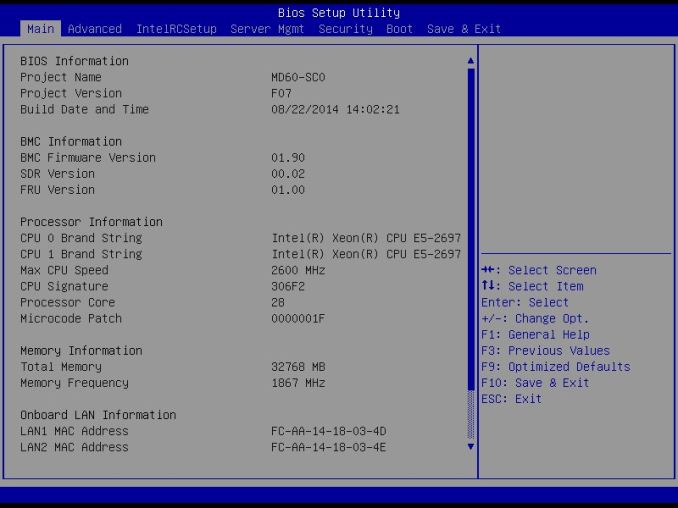
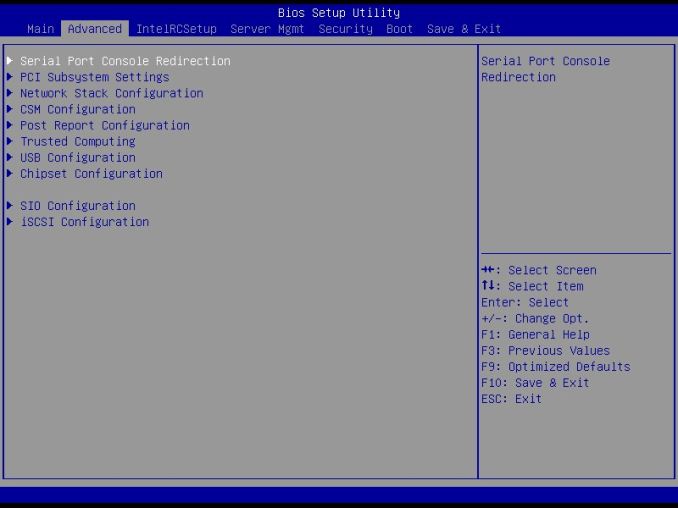

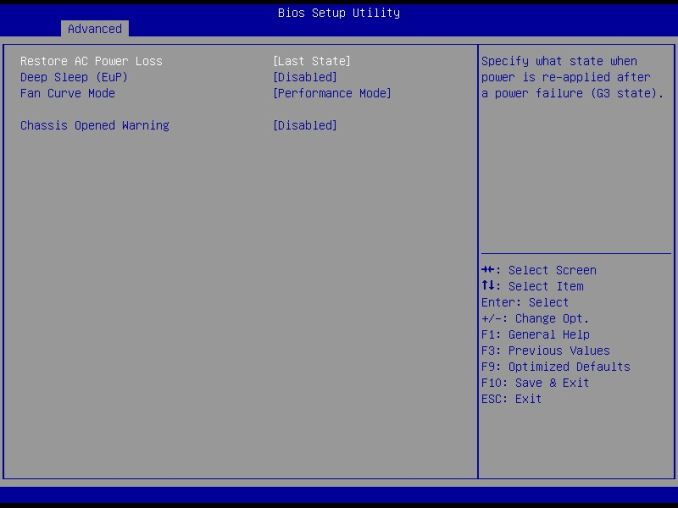
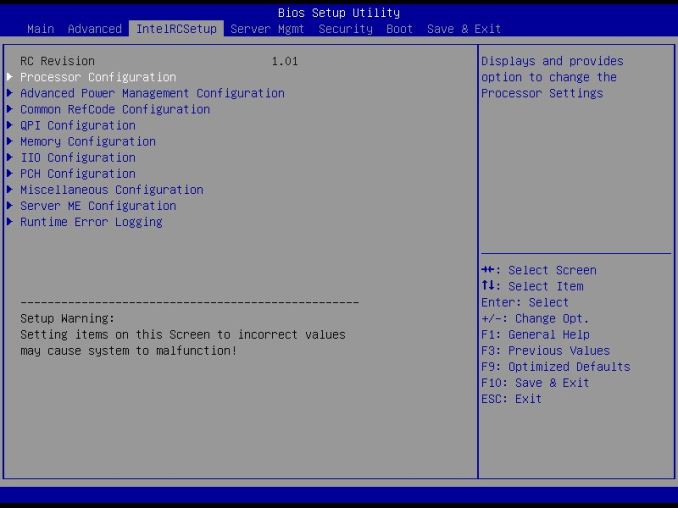
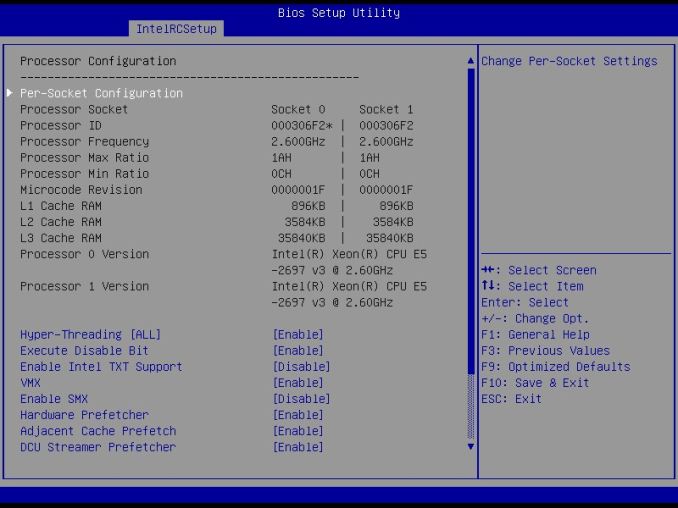
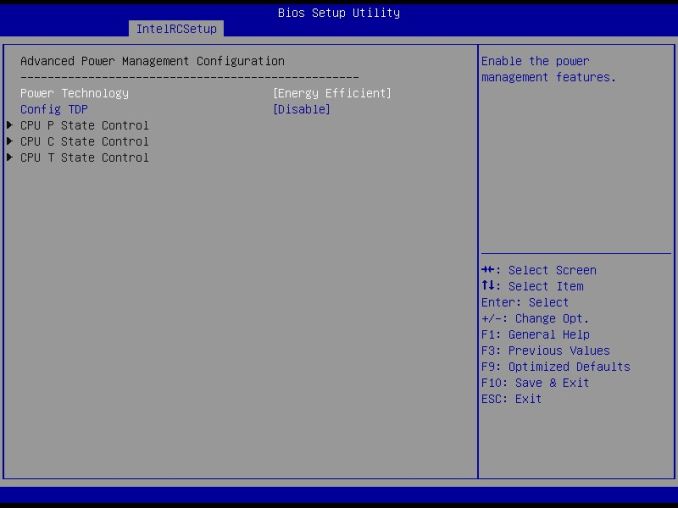
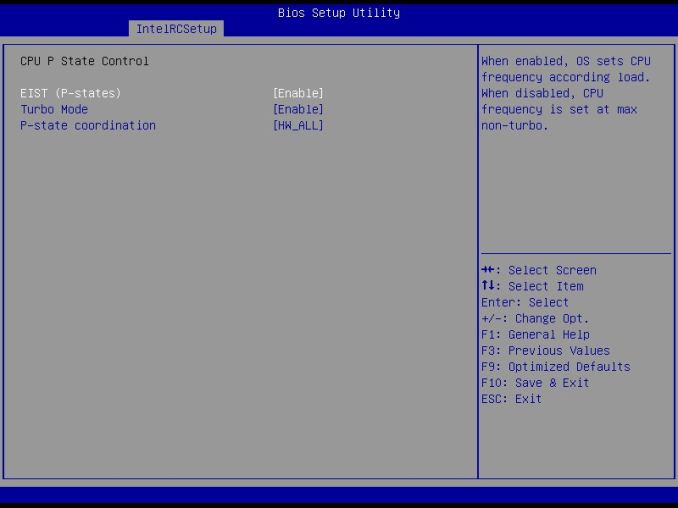
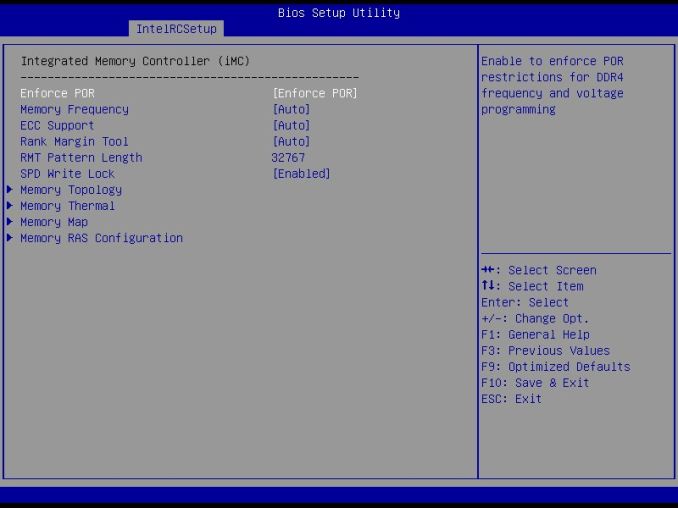
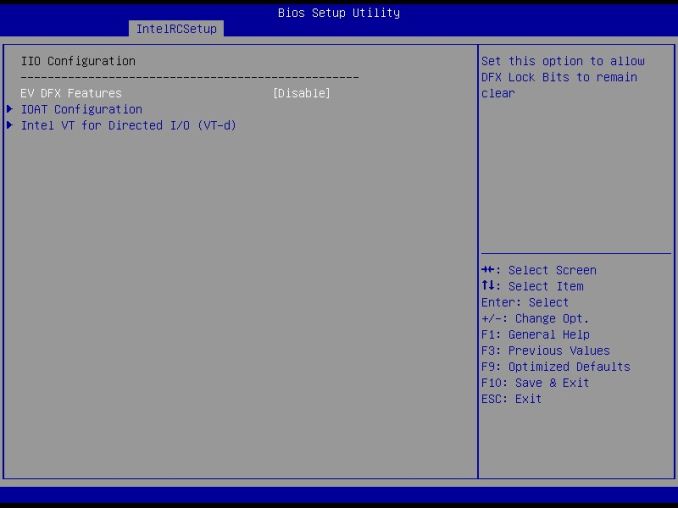
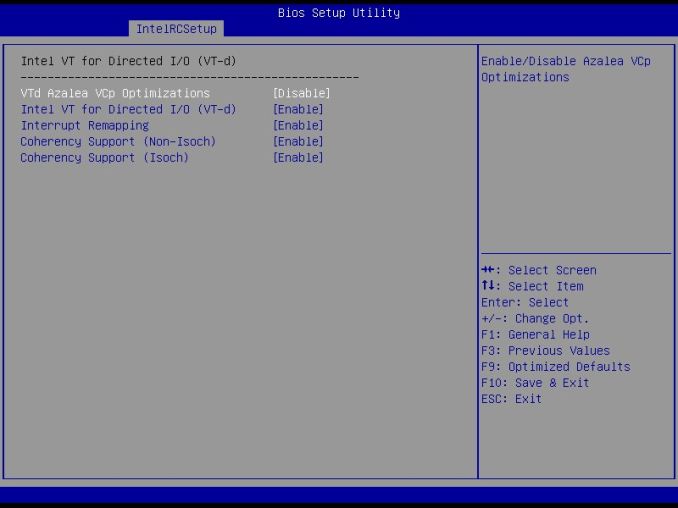
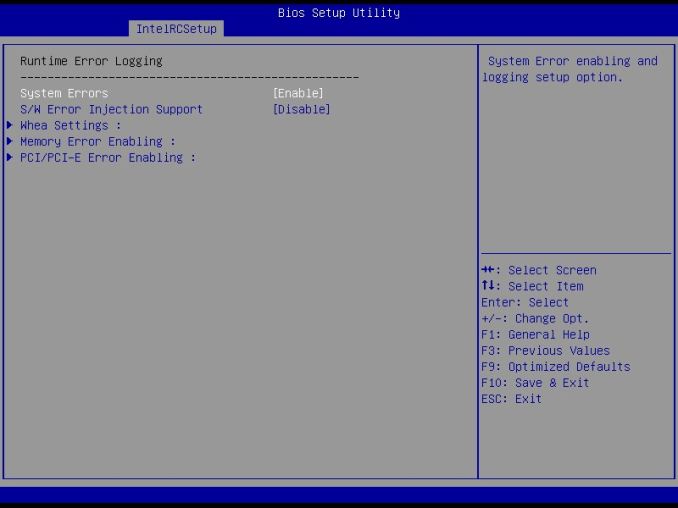
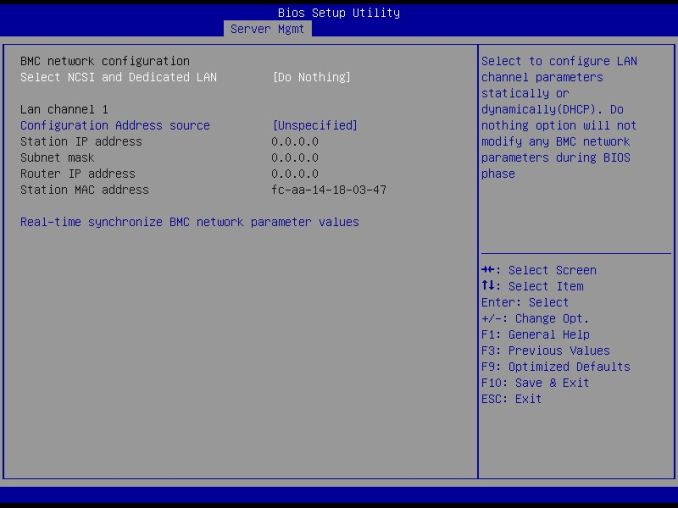
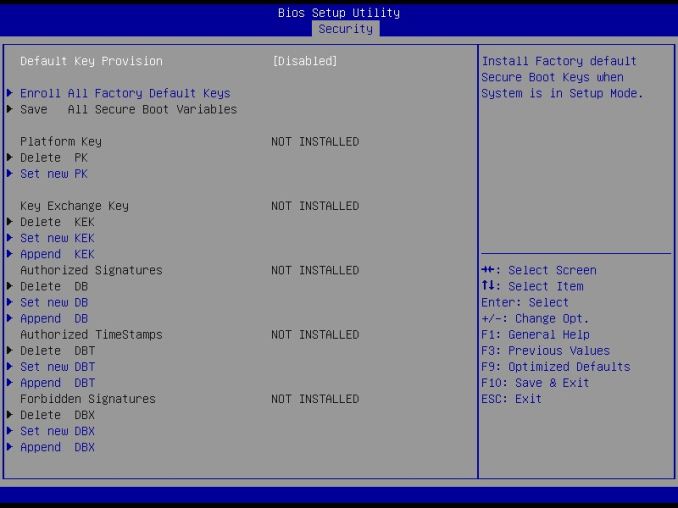
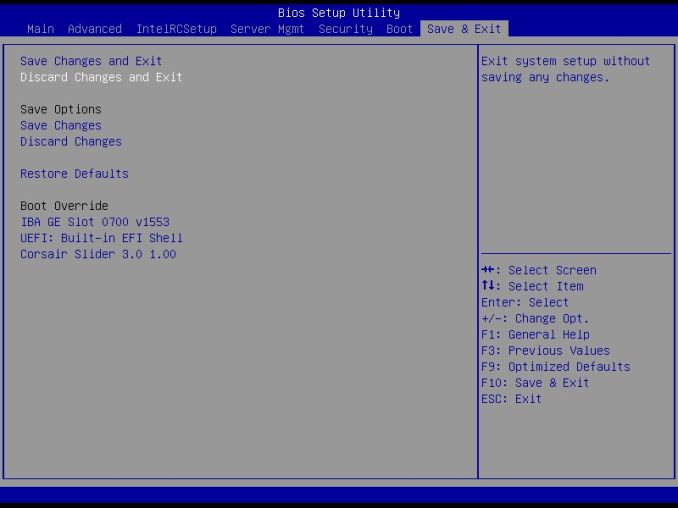






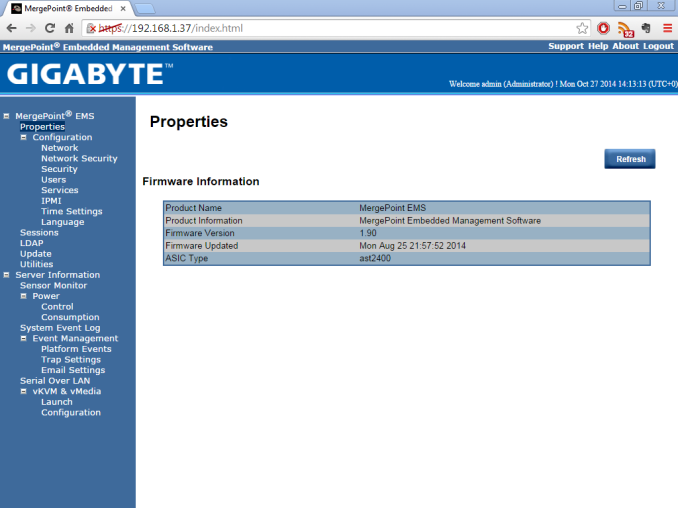
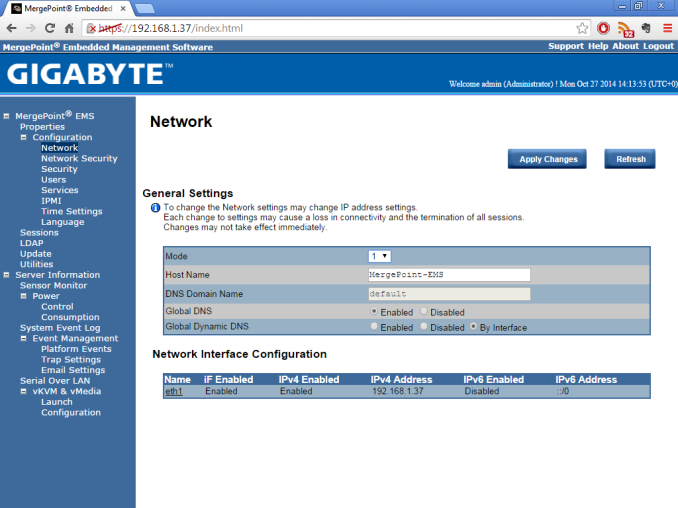

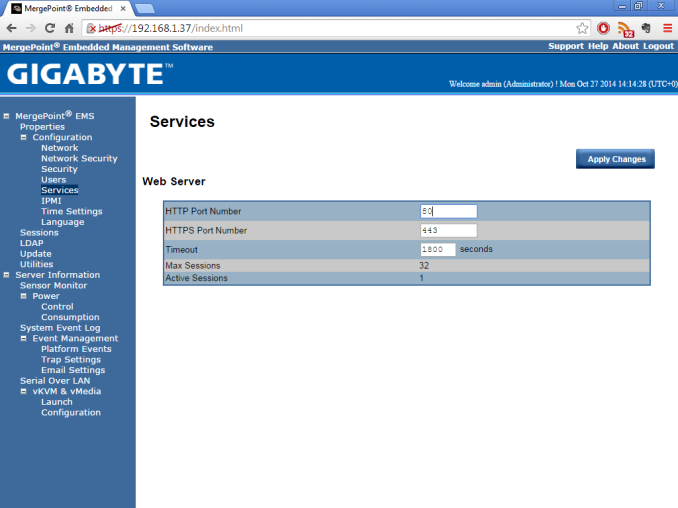
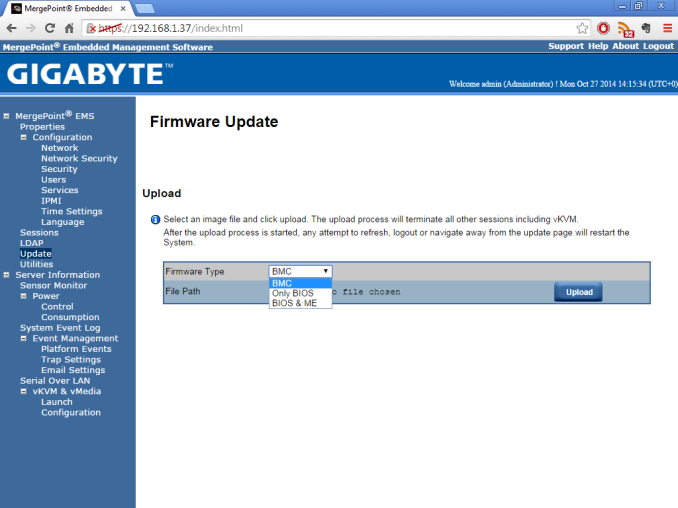
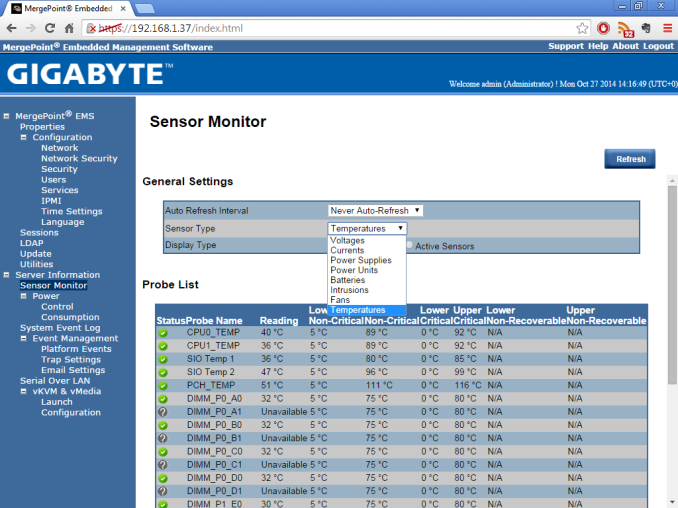
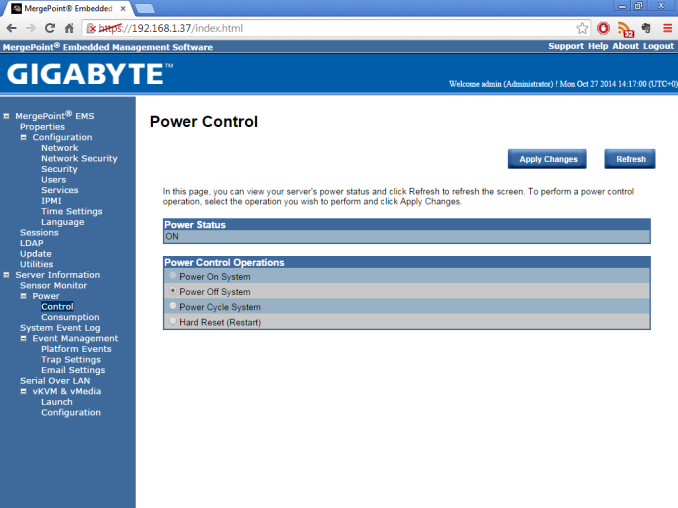
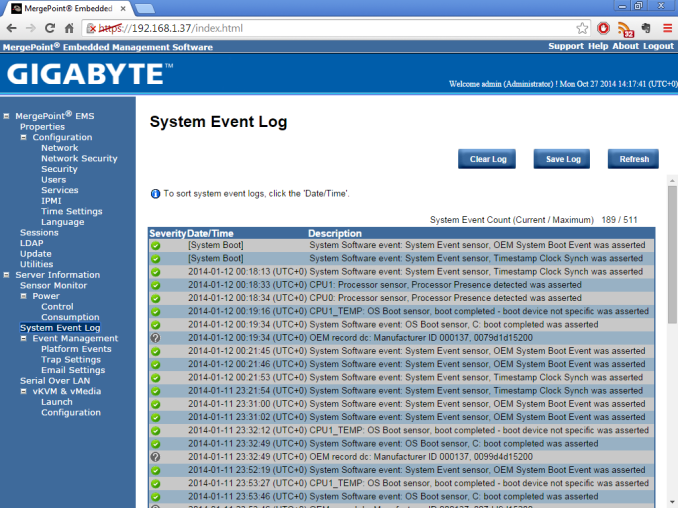
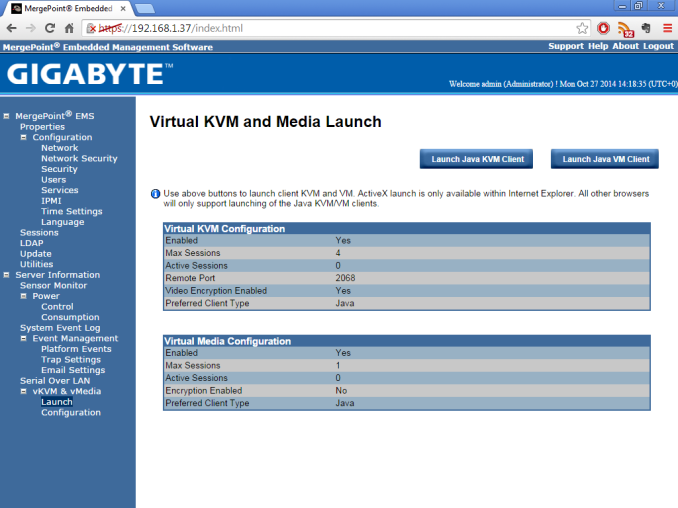














17 Comments
View All Comments
PCTC2 - Wednesday, December 3, 2014 - link
Coming from the HPC space, seeing 512GB-1TB of RAM was pretty regular, but seeing 1.5TB-2TB was rare, but did occur. However, now with systems being able to have 6TB of RAM in a single 4U rack server is pretty incredible (4P servers with 96 DIMMs, Intel E7 v2 support).However, there are a few odd things about this board. For one, the QSFP+ is totally unnecessary, as it only supports 2x10GbE, and is not either 1) Infiniband or 2) 40GbE. Sure, with LACP, you could have bonded 20GbE, but you either need a splitter cable (QSFP+ to 4x SFP, with 2 SFP unusable) or a switch that supports multiple links over QSFP+ (a 40GbE with 10GbE breakout capabilities). Also, the decision to use the SFF-8087 connectors for the SATA and individual ports for SAS confounds me, as you lose the sideband support with individual cables, and onboard SATA doesn't support the sideband, thus losing some functionality with some backplanes. Also, the card Gigabyte advertises with this board is an LSI 2308, an HBA and not a full hardware RAID.
Some of Gigabyte's B2B systems have intrigued me, especially their 8x Tesla/Phi system in 2U, but this board just doesn't seem completely thought out.
jhh - Wednesday, December 3, 2014 - link
I suspect the QSFP was designed to support a Fortville, but they didn't get them qualified in time. That would get them a true 40 Gig port, or 4x10Gfackamato - Friday, December 5, 2014 - link
What's fortville?Cstefan - Friday, December 5, 2014 - link
Intel 40GBE QSFP+Nothing the consumer need worry over for a long time yet.
Klimax - Sunday, December 7, 2014 - link
With some results already available:http://www.tweaktown.com/reviews/6857/supermicro-a...
Cstefan - Friday, December 5, 2014 - link
I run multiple database servers with 2TB of ram. My next round is slated for 4TB. And absolutely no joke, they reversed the SAS and SATA connectors in a monumentally stupid move.ddriver - Wednesday, December 3, 2014 - link
Well, surprisingly no gaming benchmarks this time, but what's with the "professional performance" benches? How many professionals out there make their money on running cinebench? How about some real workstation workloads for a change?JeffFlanagan - Wednesday, December 3, 2014 - link
This isn't a workstation, or a gaming machine.ddriver - Wednesday, December 3, 2014 - link
I actually applauded the absence of gaming benchmarks this time. As for whether this is for a workstation machines, I'd say it is far more suited for a workstation than suited for running winrar and image viewing software.And just to note this "review" of a "serve" motherboard doesn't have a single server benchmark whatsoever...
mpbrede - Wednesday, December 3, 2014 - link
My usual gripe about acronyms that are not accompanied by an explanation when the term is first used. THis time aggravated by a typo, I'm sure."The system is based on the C612 chipset, which is similar to the consumer based X99 but with 2P related features, such as MTCP over PCIe."
I'm pretty sure you meant to type MCTP (Management Component Transport Protocol) and not the mTCP (microTCP?) or MTCP (Malaysian Technical Cooperation Programme or has something to do with Transport Layer Support for Highly Available Network
Services)